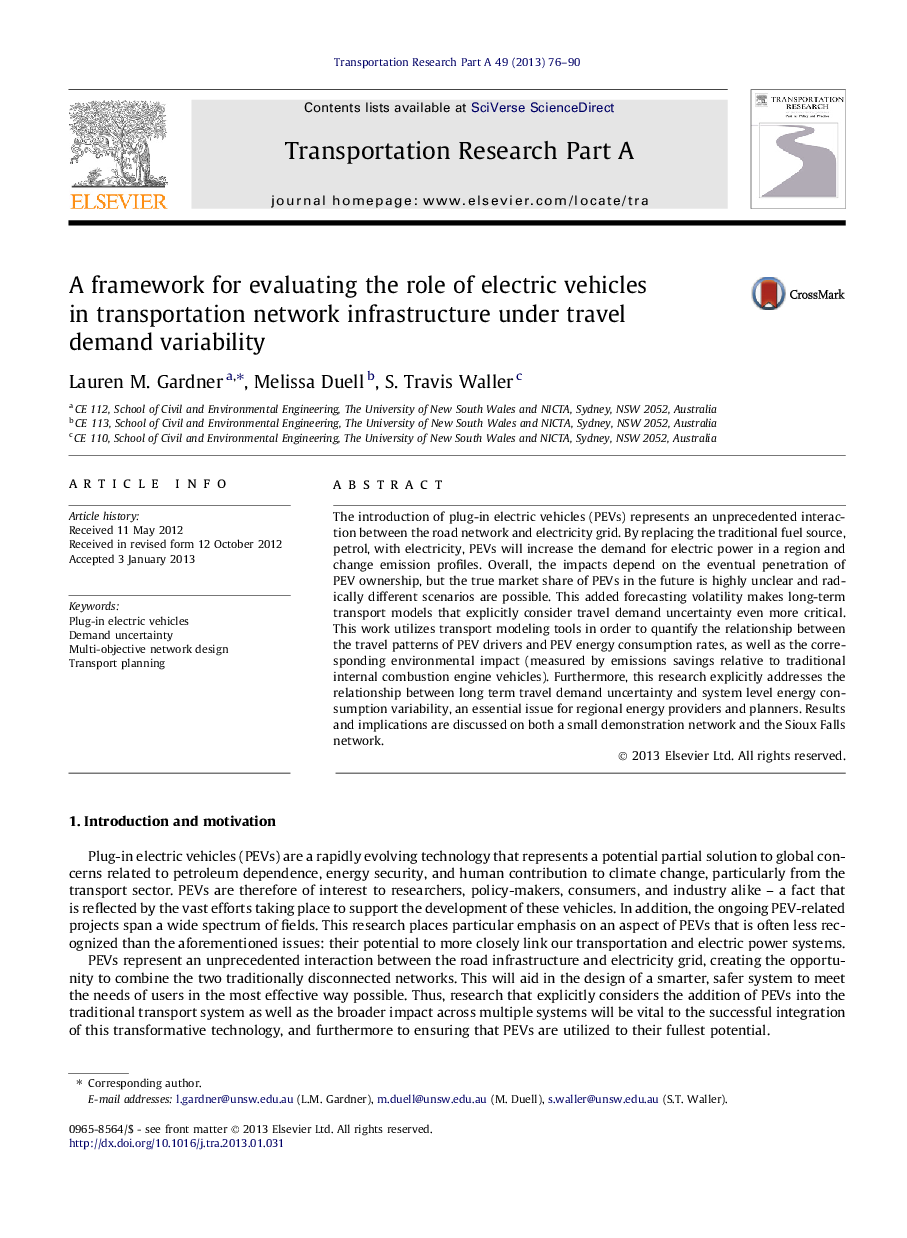| Article ID | Journal | Published Year | Pages | File Type |
|---|---|---|---|---|
| 311270 | Transportation Research Part A: Policy and Practice | 2013 | 15 Pages |
The introduction of plug-in electric vehicles (PEVs) represents an unprecedented interaction between the road network and electricity grid. By replacing the traditional fuel source, petrol, with electricity, PEVs will increase the demand for electric power in a region and change emission profiles. Overall, the impacts depend on the eventual penetration of PEV ownership, but the true market share of PEVs in the future is highly unclear and radically different scenarios are possible. This added forecasting volatility makes long-term transport models that explicitly consider travel demand uncertainty even more critical. This work utilizes transport modeling tools in order to quantify the relationship between the travel patterns of PEV drivers and PEV energy consumption rates, as well as the corresponding environmental impact (measured by emissions savings relative to traditional internal combustion engine vehicles). Furthermore, this research explicitly addresses the relationship between long term travel demand uncertainty and system level energy consumption variability, an essential issue for regional energy providers and planners. Results and implications are discussed on both a small demonstration network and the Sioux Falls network.
► We examine the impact of PEVs on the transport and electric-power systems. ► A traffic assignment model with stochastic demand is implemented. ► Energy consumption is quantified based on driving patterns vehicle type. ► Multiple performance measures are recommended for future transport planning. ► Results are presented on a sample network and Sioux Falls network.
